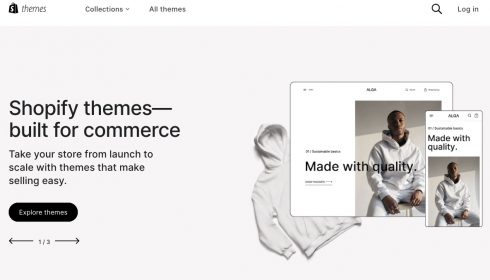A guide to using Google Ads for Cross-Border EC

Hello. My name is Saito, and I am a consultant.
When starting a Cross-Border EC, it is important to think about how to attract customers at the same time as preparing the e-commerce site, and the use of advertising will be important. In this issue, we will introduce the use of Google Ads.
Google Ads and their types
Google Ads is a platform for displaying online advertisements. Ads appear in a variety of locations, including search results pages, YouTube, Google partner sites, and Google Maps. The main ad formats include
- Search Ads: Text ads related to a user's search query, appearing at the top or bottom of Google search results.
- Display Ads: Visual ads that appear on Google partner sites and in apps.
- Shopping Ads: Ads that include product information and images and are displayed in search results and on the Google Shopping tab.
- Video Ads: Ads that appear in video content within YouTube or the Google Display Network.
How to submit a Google Ads
The following steps are used to submit a Google Ads.
1. Set up a Google Ads account
If you do not already have an account, create one by registering the email address and website of the business (store or service) you wish to promote.
For more information, please click here.
2. Set advertising campaign goals
Goals are the goals you want to achieve through your ads, such as increasing website traffic, acquiring leads, or increasing sales of your products or services. When you specify a goal and then set up an ad, features that will help you achieve that goal are clearly displayed, making it easier to determine what to set and how to set it. It is also possible to create a campaign without setting goals.
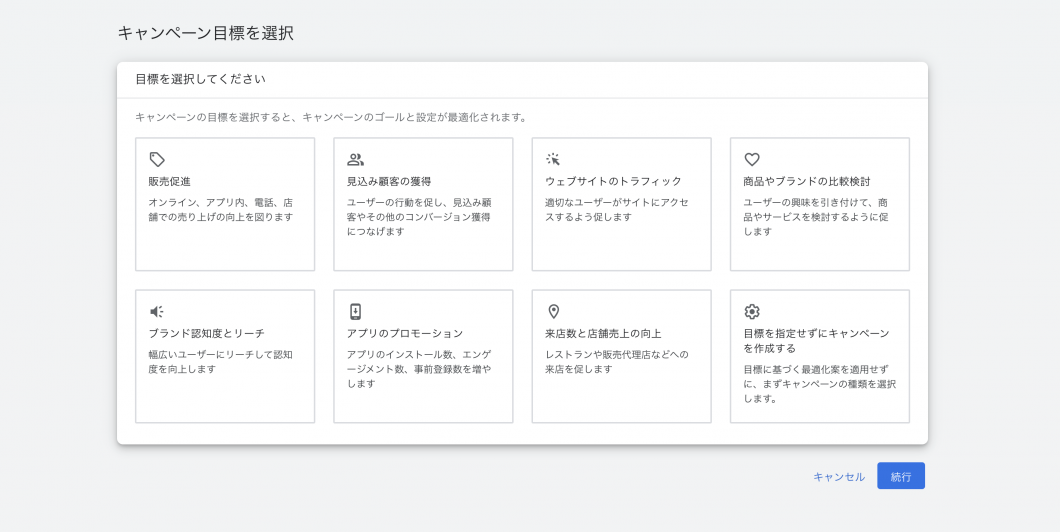
3. Select the type of ad campaign
This will depend on your business and your goals as to what you should choose.
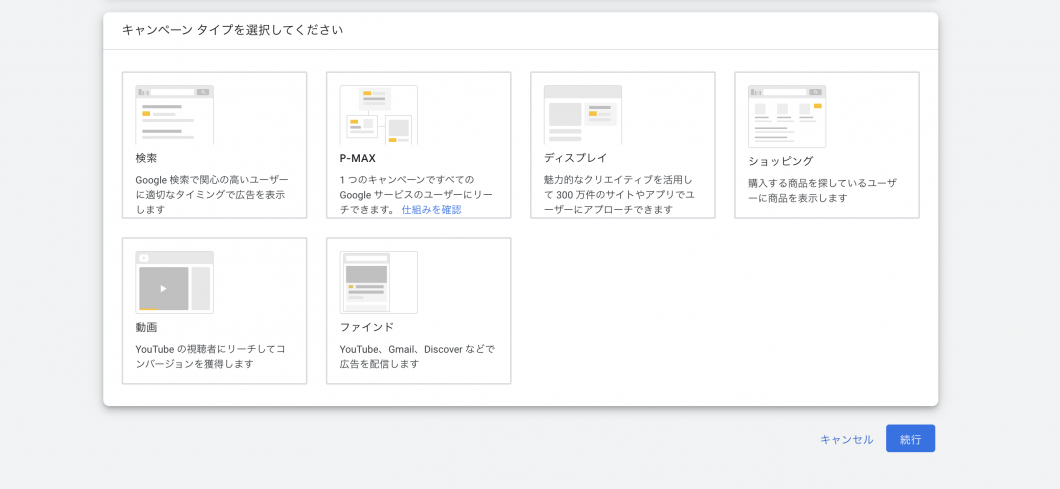
Here are the types of advertising campaigns commonly used in the general case.
- Search Ads: When there is direct demand for a product or service, or when targeting an audience with a high propensity to buy.
- Display Ads: To increase brand awareness or to target based on a specific niche or interest.
- Shopping Ads: Suitable for online stores that want to sell products directly.
- Video Ads (e.g., YouTube): To visually communicate the brand story and how to use the product.
- App Ads: If you want to promote mobile app downloads.
These are just a few examples, but we may combine multiple ad types depending on the purpose.
4. Establish methods for achieving goals
Next, choose how you want to achieve your goal and select a conversion goal.

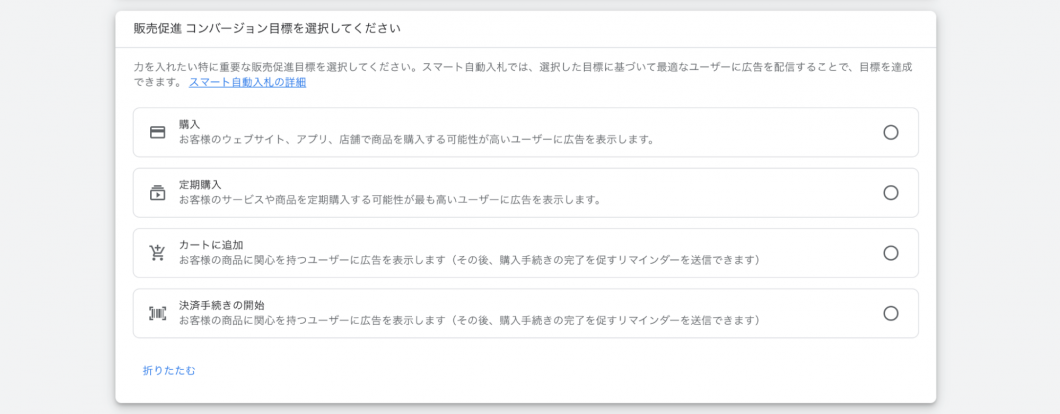
5. Campaign name setting
Set a campaign name of your choice for ease of management. Click Continue to move to the next setup screen.

6. Set unit price
Here you can select the factors you want to focus on. You can choose from "Conversion," "Conversion Value," "Number of Clicks," and "Impression Share.
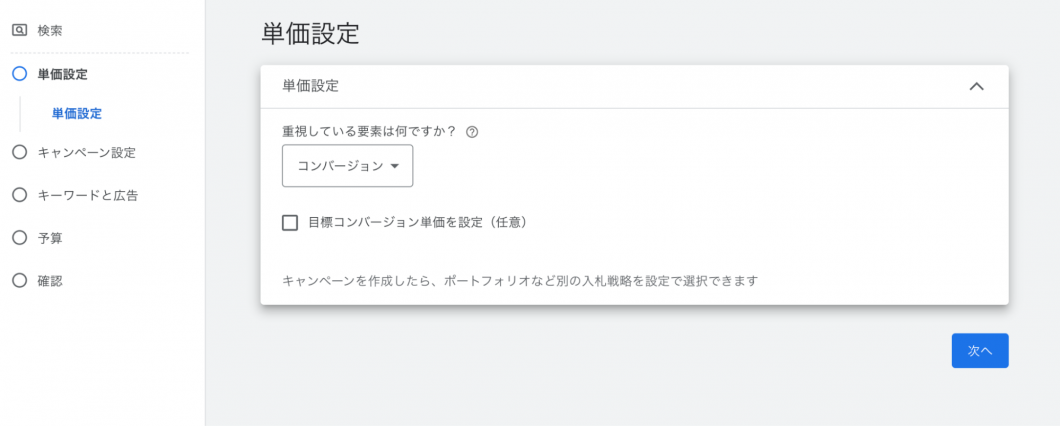
7. Campaign settings
The next step is to set up the search network. There are two networks
- a. Search network: Your ad will be displayed next to Google Search Results forand on other Google sites when searches are made for terms that are highly relevant to the keywords you have registered.
- b. Display network: An easy way to increase conversions at the same or less cost as a search network with a surplus budget.
8. Set the region and language of your ad
Next, select the region and language in which you would like to display your ad. The default is "All Countries and Regions," so select the countries, regions, and languages you wish to target according to your business goals.
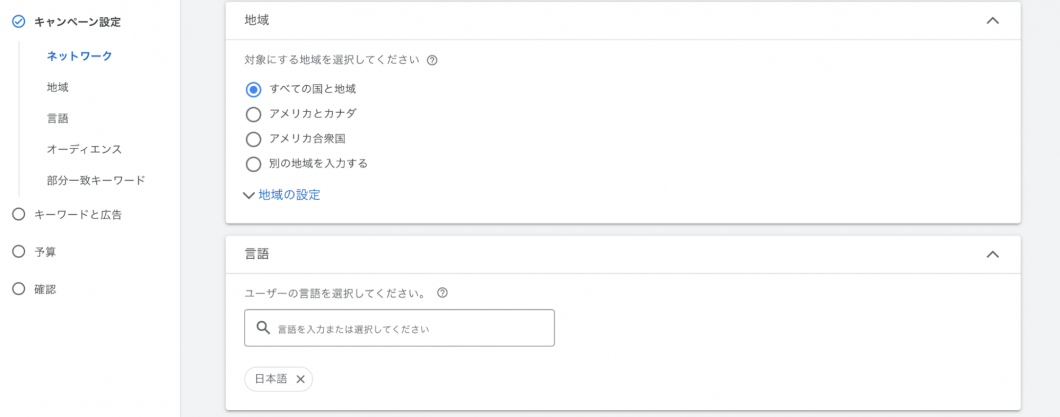
9. Setting audiences and segments
An audience is a group of users that Google estimates to have specific interests, concerns, intentions, and user attributes, and you can set what kind of audience you want your ads to be shown to.
10. Create Ad groups
The next step is to create ad groups. Multiple ad groups can be created, and it is recommended to create one for each search intent.
- a. Keywords: Imagine keywords that users search for and set keywords related to your products and services. Google Ads will also scan web pages and suggest the best keywords from keywords that have been effective for similar products and services.
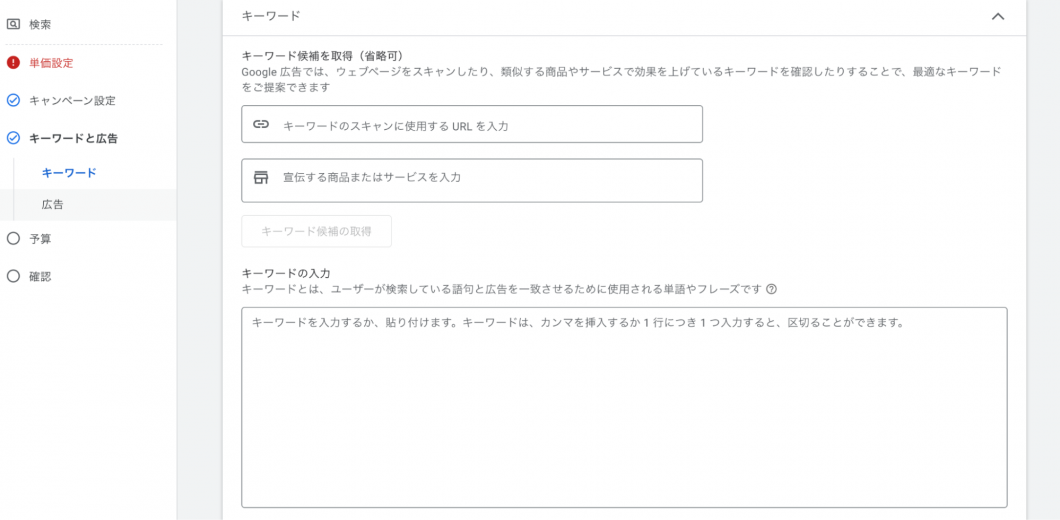
- b. Ads: Create the actual ad text you want to display and enter URLto which you want to send users when they click on the ad.
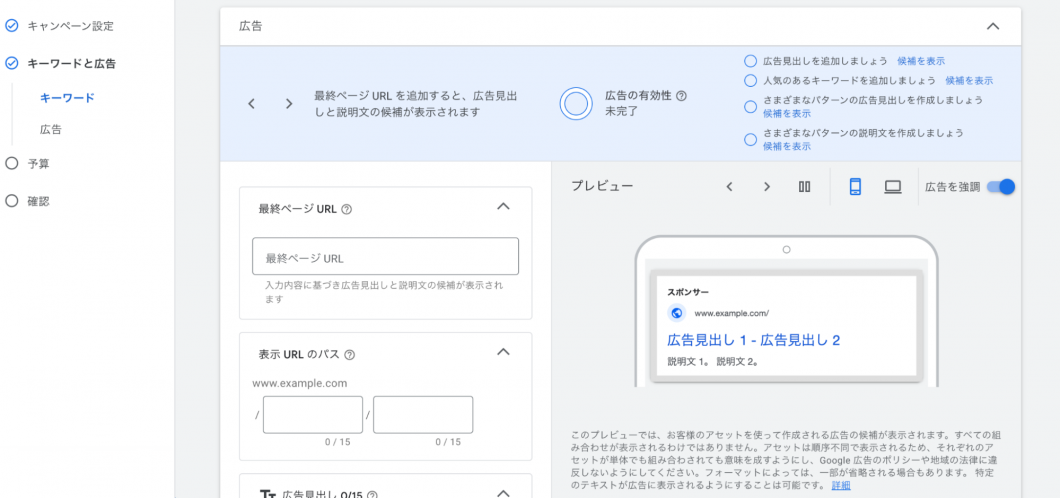
11. Set your budget
Select the desired amount as the average cost per day. The budget can be changed at any time.
12. Submit your ad
Finally, confirm all settings and submit your ad to Google.
Keys to success for Google Ads in Cross-Border EC
To get the most out of your Google Ads on the Cross-Border EC, the following elements are especially important
Understanding the target market
First, it is necessary to have a solid understanding of the region in which the ads will be displayed and the characteristics of that market. This involves researching consumer behavior in the area, the competitive landscape, and trends and seasonality specific to the region. This information will greatly assist in setting up ad campaigns, selecting keywords, and crafting ad messages.
Appropriate language and currency
It is important to create advertisements in a language that is easily understood by users. In addition, product prices should be displayed in the user's local currency to enhance the user experience and encourage product purchases.
Selecting the best ad format
Depending on the characteristics of your product or service, it is important to select the most appropriate ad format. For example, if you are selling a visual product, display or shopping ads using images would be effective.
Application of the PDCA cycle
Google ad activity is not something that is set up once and then left alone. We regularly check the performance of your ads, and if we find areas for improvement, we will modify your ad settings in a timely manner. This maximizes the effectiveness of your ads and the efficiency of your investment.
Setting an appropriate budget
A budget is necessary to place an ad. However, its setting must be balanced with business goals. In addition, the budget can be adjusted according to the performance of the advertisement, and there is no need to make a large investment right from the start.
Summary
Using Google Ads in Cross-Border EC can help your business achieve success in foreign markets. understanding the capabilities of Google Ads and properly configuring and optimizing them can help you reach more international customers. It may be a challenge, but Google Ads is a powerful tool that can show you the way.
Achieve results with "minimum investment and effort.
Cross-border e-commerceOne-stop shop for services

